 W
WAkerendam was a ship of the Dutch East India Company (VOC), built in 1724. On 19 January 1725, the Akerendam left in convoy with two other ships, heading for Batavia with a crew of 200 people and 19 chests of gold and silver on board. On 8 March 1725 the Akerendam drifted in a snow storm and sank near the cliffs of Runde island. Despite the fact that the ship was wrecked close to the shore there were no survivors.
 W
WAlbatros is a sailing ketch built in the Netherlands in 1899. Trading as a cargo sailing ship until 1996, she is now used as a training vessel.
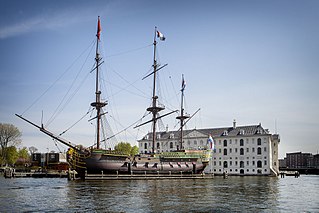 W
WThe Amsterdam was an 18th-century cargo ship of the Dutch East India Company. The VOC was established in 1602. The ship started its maiden voyage from Texel to Batavia on 8 January 1749, but was wrecked in a storm on the English Channel on 26 January 1749. The shipwreck was discovered in 1969 in the bay of Bulverhythe, near Hastings on the English south coast, and is sometimes visible during low tides. The wreck is a Protected Wreck managed by Historic England. "Details from listed building database (1000055)". National Heritage List for England. Some of the findings from the site are in The Shipwreck Museum in Hastings. A replica of the ship is on display in Amsterdam.
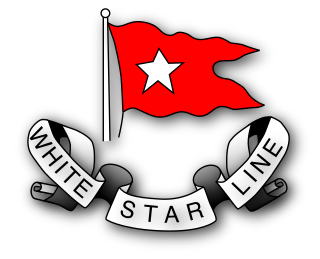 W
WSS Arabic was a steamship of the White Star Line and its first steel-hulled vessel. Like her predecessors, she was built by shipbuilders Harland and Wolff of Belfast.
 W
WSTV Astrid was a 41.90-metre long tall ship that was built in 1918 in the Netherlands as a lugger and originally named W.U.T.A., short for Wacht Uw Tijd Af meaning "Bide Your Time". She was later transferred to Swedish ownership, renamed Astrid and sailed on the Baltic Sea until 1975. She then sailed under a Lebanese flag and was allegedly used for drug smuggling. After being found burnt out on the coast of England in the early 1980s, she was overhauled and used as a sailing training vessel. She was based in Weymouth, Dorset, United Kingdom and was informally known as "Weymouth's vessel".
 W
WUSS Bali was a large Dutch freighter seized in New York City by the U.S. Customs Service during World War I. She was assigned to the U.S. Navy and later the U.S. Army as a cargo ship to be used to carry military cargo to Allied forces in France. After a number of transatlantic voyages, she was returned to the Dutch government at war's end. She subsequently remained busy transporting cargo until World War II, when she was wrecked by Luftwaffe bombers in the Mediterranean. Her remains were reclaimed and disposed of by scrapping in 1951.
 W
WSS Bantam was built by N.V. Machinefabriek & Scheepswerf van P. Smit Jr. of Rotterdam, Netherlands in 1930 of 3322 gross weight and operated by Koninklijke Paketvaart-Maatschappij. Bantam, under charter, became a part of the initial United States Army local fleet in Australia, was severely damaged 28 March 1943 in New Guinea and eventually scuttled off Sydney.
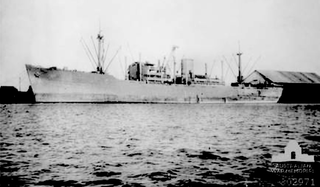 W
WMS Bantam , 9,312 GRT, was built by N.V. Machinefabriek & Scheepswerf van P. Smit Jr. of Rotterdam, Netherlands in 1939 for Koninklijke Rotterdamsche Lloyd. It was the second ship of the name, the other being SS Bantam (1930) of 3,322 GRT of Koninklijke Paketvaart-Maatschappij and sunk 28 March 1943, from this builder operating in the same region and during overlapping times.
 W
WChristiaan Huygens was a Dutch ocean liner that was built in 1927 by the Nederlandsche Scheepsbouw Maatschappij for the Stoomvaart Maatschappij Nederland (SMN). She was employed on the Amsterdam – Batavia route until the outbreak of the Second World War. Requisitioned as a troopship, she was employed in the Mediterranean Sea and Indian Ocean. Surviving the end of the war in Europe, she struck a mine in the Scheldt on 26 August 1945 and was beached. She broke in two on 5 September and was declared a total loss.
 W
WSS Dia was a 2,905 GRT cargo ship which was built as Empire Beaconsfield in 1943. She was owned by the Ministry of War Transport (MoWT) and managed by Bank Line Ltd and Constants LTd. Postwar she was sold to her managers and renamed Hawkinge. She later saw service with different owners as Angusbrae, Hispania and Dia. She developed a leak and sank off Savona, Italy on 14 October 1964.
 W
WThe Emsmoon is a cargo ship that was built in 2000 as Morgenstond III. In December 2015, she collided with and demolished the bridge carrying the Ihrhove–Nieuweschans railway over the Ems.
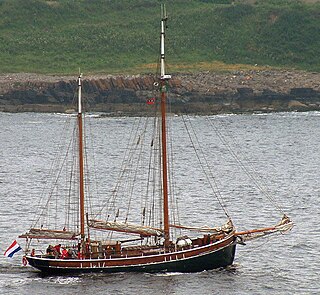 W
WThe Esther Jensen is a gaff-rigged ketch built in 1939 in Denmark.
 W
WFrontier was a 1,000 GRT cargo ship that was built in 1922 as Cattaro by Memeler Schiffswerke, Lindenau & Co, Memel, Germany. After a sale in 1930 she was renamed Finkenau. In 1945, she was renamed Levensau and was seized later that year by the Allies at Brunsbüttel, passed to the Ministry of War Transport (MoWT) and was renamed Empire Convoy. She was allocated to the Netherlands in 1946 and renamed Grebburg. She was sold into merchant service in 1947 and renamed Echo. A sale to South Africa in 1952 saw her renamed Frontier. The ship served until 1957 when she ran aground and broke up.
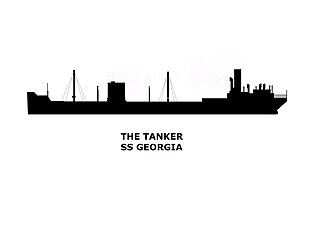 W
WSS Georgia was an oil tanker lost at Haisborough Sands off the coast of Norfolk, England in November 1927.
 W
WSS Japara was a freighter of 3,323 GRT built by Mach. Fabr. & Scheepswerf P. Smit Jr., Rotterdam in 1930 and operated by Koninklijke Paketvaart-Maatschappij (KPM) in the Dutch East Indies trade. The 1930 Japara was operating with the United States Army permanent local fleet of the U.S. Army Forces in Australia (USAFIA) from 1942 until 1945 even while the larger ship, 9,312 GRT MS Japara (1938), was active in Army service oceanwide. Japara of 1930 played an important logistics role in the New Guinea Campaign.
 W
WThe MV Karadeniz Powership İrem Sultan is a Liberia-flagged Powership, a floating power plant, owned and operated by Karpowership. Built in 1984 by the Fincantieri Marghera Shipyard in Venice, Italy and christened MV Nikolay Markin, she sailed as a barge carrier under various names and flags until in 2014 she was converted into a powership at the Sedef Shipyard in Tuzla, Istanbul, Turkey. Currently, she served in Nacala, Mozambique supplying electricity to Mozambique's power grid for land-locked Zambia. Currently, she serves only in Mozambique.
 W
WThe MV Karadeniz Powership Zeynep Sultan is a Liberia-flagged Powership, a floating power plant, owned and operated by Karpowership. Built in 1984 by the Valmet Oy Helsingin Telakka in Vuosaari, Helsinki, Finland and christened MV Pavel Antokolsky, she sailed as a barge carrier under various names and flags until in 2015 she was converted into a Powership at the Sedef Shipyard in Tuzla, Istanbul, Turkey. She is commissioned to supply electricity to the power grid in Amurang, North Sulawesi, Indonesia.
 W
WSS Karsik was a freighter built for Deutsche Dampfschifffahrts-Gesellschaft "Hansa" by Deutsche Schiff- und Maschinenbau AG, Werk Seebeck, Wesermünde as Soneck, in 1938, of 2,191 GRT.
 W
WThe Klipfontein was a Dutch ocean liner built in 1939.
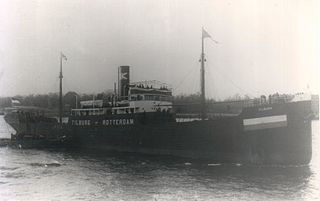 W
WLjusneälf was a 1,391 GRT cargo ship that was built in 1917 as Tilburg by L Smit & Zoon, Kinderdijk for Dutch owners. She was sold to German owners in 1922 and renamed Ljusneälf. A sale in 1938 saw her renamed Hubert Schröder. She was seized by the Allies in April 1945, passed to the Ministry of War Transport (MoWT) and renamed Empire Conquest.
 W
WMeermin was an 18th-century Dutch cargo ship of the hoeker type, one of many built and owned by the Dutch East India Company. She was laid down in 1759 and fitted out as a slave ship before her maiden voyage in 1761, and her career was cut short by a mutiny of her cargo of Malagasy people. They had been sold to Dutch East India Company officials on Madagascar, to be used as company slaves in its Cape Colony in southern Africa. Half her crew and almost 30 Malagasy lost their lives in the mutiny; the mutineers deliberately allowed the ship to drift aground off Struisbaai, now in South Africa, in March 1766, and she broke up in situ. As of 2013, archaeologists are searching for the Meermin's remains.
 W
WMi Amigo was originally a three-masted cargo schooner, that later gained international recognition as an offshore radio station. She was built as the schooner Margarethe for German owners. A sale in 1927 saw her renamed Olga and she was lengthened in 1936. During the Second World War, she was requisitioned by the Kriegsmarine and served as an auxiliary ship between 1941 and 1943. In 1953, the ship was again lengthened to 133 feet 9 inches (40.77 m). In 1959, she was sold for conversion to a floating radio station and was renamed Bon Jour. Subsequently, she was renamed Magda Maria in 1961 and Mi Amigo in 1962. She served, intermittently, as a radio ship, until 1980, when she sank in a gale.
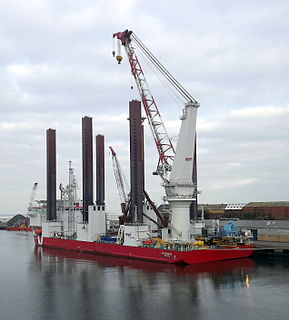 W
WTIV MPI Adventure is a 14,739 GT wind turbine installation vessel that was built in 2010 by Cosco Nantong Shipyard, China.
 W
WOcean Victory was a 7,174 GRT cargo ship that was built in 1942 for the British Ministry of War Transport (MoWT). In 1943, she was transferred to the Dutch Government and renamed Jan Steen. In 1946, she was sold into merchant service and renamed Amstelveen. A sale to Hong Kong in 1959 saw her renamed Polly. She served until 1963 when she was scrapped.
 W
WMS Pride of Rotterdam is a Dutch registered passenger and cargo roll-on/roll-off ship, in service with P&O North Sea Ferries on the Hull - Rotterdam route. The cruiseferry was also featured in the video game Ship Simulator Extremes.
 W
WThe Prins Willem, also spelled Prins Willim, was a 17th-century East Indiaman of the Dutch East India Company. She was their largest ship at the time. The ship made her first voyage to the Dutch East Indies in 1651. After several voyages, she sank near Madagascar in 1662. A replica of the Prins Willem was built in 1985, but she was destroyed by fire in 2009.
 W
WRainbow Warrior is a purpose-built motor-assisted sailing yacht owned and operated by Greenpeace and intended for use in their activities such as environmental protests and scientific excursions. She was christened on October 14, 2011, and has replaced Rainbow Warrior II after further upgrades and maintenance of the older ship had been shown to be impractical.
 W
WMV Rocknes is a 166-metre (545 ft)-long rock discharge vessel that hit shallow water and suddenly capsized south of Bergen, Norway on 19 January 2004, killing 18 members of its 30-person crew. At the time of its sinking, it was the world's largest dynamically positioned flexible fall pipe rock dumping vessel. The ship was repaired during 2004 and 2005 and renamed Nordnes.
 W
WSS 's Jacob Dutch freighter built by Maatschappij Fijenoord, Rotterdam, Netherlands, in 1907, of 2,839 GRT and operated by Koninklijke Paketvaart-Maatschappij (KPM) in the Dutch East Indies trade. The ship, after seeking refuge in Australia during the Japanese invasion of the islands, became part of the Southwest Pacific Area (SWPA) command's permanent local fleet. 's Jacob was sunk off Papua New Guinea on 8 March 1943 during World War II by Japanese air attack.
 W
WScantic was a 326 GRT coaster that was built in 1936 by Noord Nederland Scheepsmakkerij, Groningen as Dr Colijn for a Dutch owner. In 1940, she was transferred to the Ministry of War Transport (MoWT) and renamed Empire Crocus. In 1947, she was sold into merchant service and renamed Stainton. A further sale in 1951 saw her renamed Benwood. In 1955 she was sold to Finland and renamed Monica. A further sale to Sweden in 1957 saw her renamed Mona. In 1963, she was sold to Denmark and renamed Scantic, serving until 7 December 1964 when she foundered in St Georges Channel, United Kingdom.
 W
WThe MV Sirius is a Greenpeace ship named after the star Sirius. The Sirius was built with modern specifications at the Boele shipyard in the Netherlands in 1950 as one of 7 pilot vessels. The ship, originally owned by the Royal Dutch Navy, was sold to Greenpeace during 1981 while in dry dock. The ship was refitted, repaired, and repainted. It took ten weeks to paint her. The ship's colour scheme was soon changed to a green hull and rainbow colours and a white dove of peace with an olive branch was painted on the bow. Sirius was refitted with more modern navigation systems, communication equipment, lifeboats, and rafts. The pantries were turned into outdoor engine rooms and the mess room became a storage room.
 W
WSS Tasman was a 4,922 gross register tons (GRT) Dutch steamship built by Earle's Shipbuilding and Engineering Company Limited, Hull in 1921 for Koninklijke Paketvaart-Maatschappij (KPM), Batavia. With outbreak of the war in the Pacific and the fall of the Dutch East Indies, Tasman was one of 21 KPM vessels that sought refuge in Australia. These ships became the core of the initial Southwest Pacific Area (SWPA) command's permanent local fleet under U.S. Army control. After general service as a transport, the ship was converted to a hospital ship at Melbourne. The ship, under the Dutch flag and Dutch certification under the Hague Convention, served the remainder of the war as a Dutch hospital ship.
 W
WSS Van Heemskerk was a freighter built by N.V. Nederlandsche Scheepsbouw-Maatschappij with engines built by Nederlandsche Fabriek van Werktuigen & Spoorwegmaterieel N.V, both of Amsterdam, Netherlands. The ship of 2,996 GRT was launched 31 August 1909 and delivered 29 October 1909 for operation by Koninklijke Paketvaart-Maatschappij (KPM) in the Dutch East Indies trade.
 W
WVrouw Maria was a Dutch wooden two-masted merchant ship carrying a valuable cargo of art objects, captained by Raymund Lourens, that sank on October 9, 1771, in the outer archipelago of the municipality of Nagu, Finland, 11 kilometers south-east of the island of Jurmo. In 1999, the ship was discovered by the members of Pro Vrouw Maria, led by Rauno Koivusaari. A dispute between the discoverers and the authorities was later resolved. The ship was in good condition when it was discovered, but only six objects from the deck of the ship have been salvaged. The cargo holds have not been disturbed, so the condition of any art on board remains unknown. The Finnish National Board of Antiquities is responsible for the ship and all recovery efforts.
 W
WWitch of the Wave was a long-lived extreme clipper in the California trade, with a sailing life of over 34 years. In 1851, she sailed from Calcutta to Boston in 81 days, setting a record. It was renamed the Electra in 1871.
 W
WZaanland was a steam single-screw cargo ship built in 1900 by Russell and Company of Port Glasgow for Zuid Amerika Lijn of Amsterdam with intention of carrying cattle from Argentina and Uruguay to various ports in Europe, including England. The cargo ship operated on South America to Europe route during her entire career. She was requisitioned by the US Navy in March 1918 and sunk after colliding with another vessel on her first trip under Navy flag two months later.
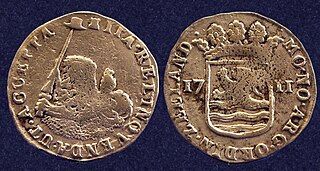 W
WZuytdorp also Zuiddorp was an 18th-century trading ship of the Dutch East India Company.